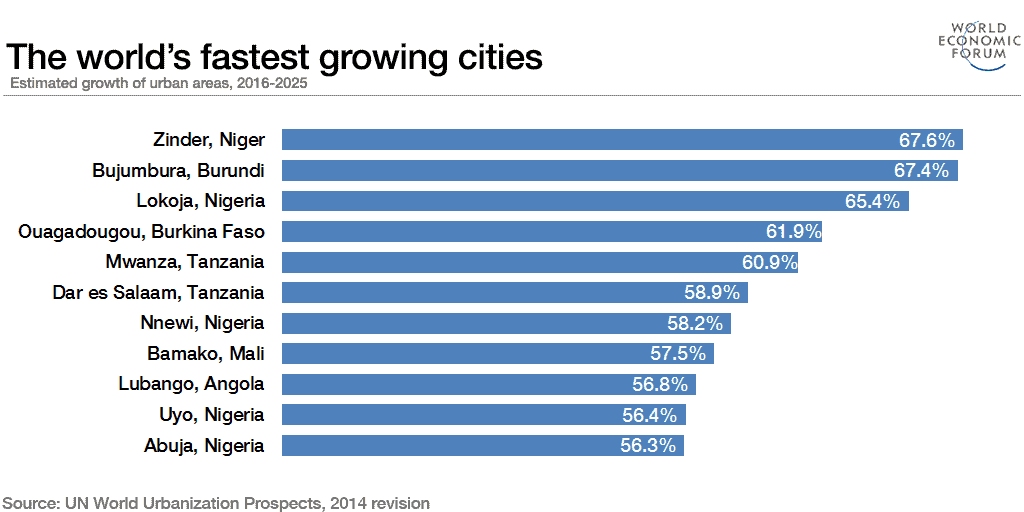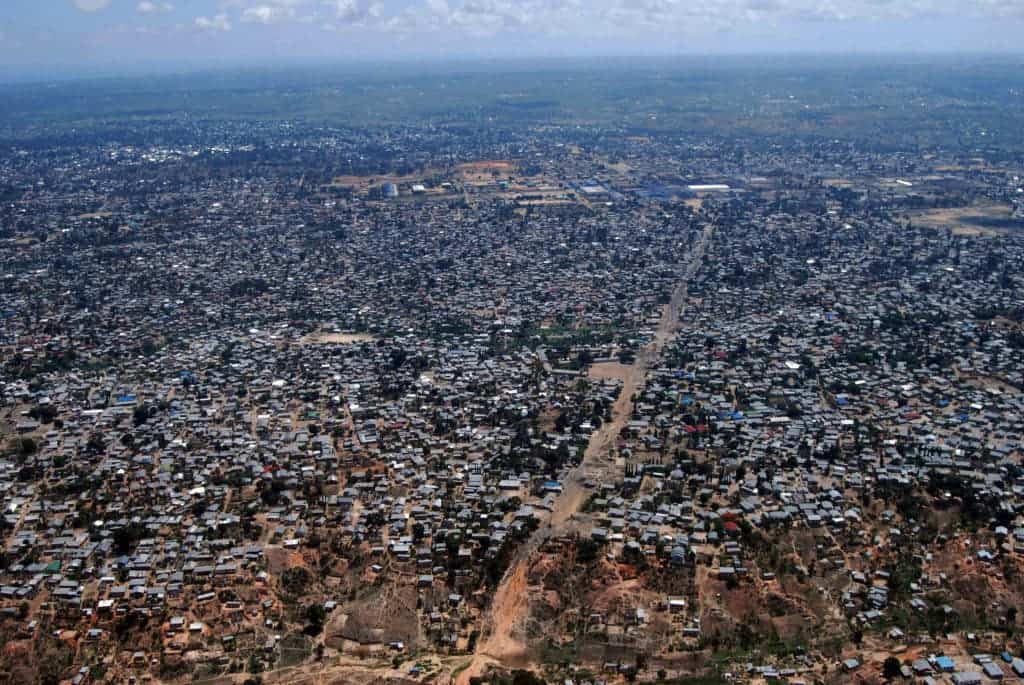Worldwide, more and more people are starting to move from rural areas to urban areas. But nowhere is this as prevalent as in Africa.

Village –> City
According to UN data, more people live in urban areas than in rural areas, with 54 per cent of the world’s population residing in cities in 2014. The figure is continuing to increase, and although the overall population of the planet continues to rise, rural population is nearing its peak or has already peaked. That means that almost all of the world’s extra population will live in cities. Overall, just three countries (India, China, and Nigeria) are expected to account for 37 per cent of the projected growth of the world’s urban population by 2050’. — and that will mostly be in cities. India is expected to add 404 million urban dwellers by then, China 292 million and Nigeria 212 million. But if you take India and China out of the picture, it’s all Africa. In fact, the fastest growing cities are all African.
Some of these cities are relatively small, with the fastest growing one (Zinder, in Nigeria) hosting just over 200,000 residents. But some are already sprawling urban centers. Take Dar es Salaam for instance. It’s the largest city in eastern Africa, the capital of Tanzania, home to over 4.4 million people. In less than ten years, it will add over 2 million more. When you consider that in the 1970s, Dar es Salaam hosted under 400,000 residents, the rate of growth becomes evident. It’s grown ten times in four decades, and the growth is accelerating — and this is not a singular case. Bamako, the capital of Mali (whose name means “crocodile tail”), has experienced a staggering population growth. In 1884, it had only 2500 inhabitants, 8000 in 1908, 37,000 in 1945, and 100,000 in 1960. Today, the population is at least 18 times what it was in 1960, with over 1,800,000 recorded at the 2009 census. When you consider that these are just the official figures, with many other squatters and illegal residents in the city, the rate of growth is even more impressive. More and more people desperately move from poorer rural areas to cities. But is that a good thing?

Bigger cities, bigger opportunities, bigger challenges
In 1990, there were only ten so-called ‘megacities’ in the world (cities with over 10 million inhabitants). Soon, we’ll have 28 megacities, accounting for 12% of total urban population. We have more and bigger cities in virtually all parts of the world. This is generally regarded as a good trend because living in urban areas is associated with improvements in health, education, and overall standard of life.
People in cities are generally more educated and healthier than those in rural areas. They tend to live longer, but interestingly, they tend to have fewer kids. In fact, it may very well be that growing urban populations do a lot to limit overall population growth — as more people (especially more women) move to cities, they will be more educated and have fewer children, a correlation that has long been established. This could go a long way to limiting our planet’s population, growth, which is unsustainable as it is.
‘Urban living is often associated with higher levels of literacy and education, better health, greater access to social services, and enhanced opportunities for cultural and political participation’ explains the report.
But it’s not like moving to cities will make everything magically better. Growing urban areas come with a great deal of challenges as authorities in the developing world will certainly struggle to provide sufficient transport, sanitation, education, health care, housing and utilities. According to the WHO, urban population growth, in absolute numbers, is concentrated in the less developed regions of the world. It is estimated that by 2017, even in less developed countries, a majority of people will be living in urban areas, and that makes those challenges even more tough to beat. In fact, as the UN themselves highlight, cities often harbor great inequality, which threatens to get even wider in the following decades.
“Nevertheless, rapid and unplanned urban growth threatens sustainable development when the necessary infrastructure is not developed or when policies are not implemented to ensure that the benefits of city life are equitably shared. Today, despite the comparative advantage of cities, urban areas are more unequal than rural areas and hundreds of millions of the world’s urban poor live in sub-standard conditions. In some cities, unplanned or inadequately managed urban expansion leads to rapid sprawl, pollution, and environmental degradation, together with unsustainable production and consumption patterns.”
All in all, the world’s population is changing, and it’s changing most in Asia, South America, and Africa. Don’t ignore it just because it’s not in front of your eyes.




